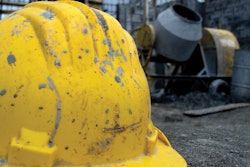
By Kate Fox Wood, AEM Director of Government Relations
If the skilled trades are facing a widespread workforce shortage today, then what does the future hold for OEMs, dealers, fleet managers and equipment end users?
The construction industry – like any other – is always changing. Successful companies recognize disruption as it occurs, and they react accordingly. Meanwhile, those that don’t fail to achieve their organizational goals and often see their bottom lines suffer over the long term.
The existing skilled worker shortage took years to become the significant issue it is today. Addressing it will be a tall task for the industry, and doing so effectively will require a long-term commitment on the part of all construction contractors to embrace workforce development as a means to recruit, develop and ultimately retain the employees of tomorrow.
3 Keys to Close the Construction Skills Gap
Investing in the Future
Good jobs in the construction industry are there for the taking, and the vast majority of contractors in business today are committed to helping incoming workers learn, grow and develop on the job – all while providing quality wages and competitive benefits. But in order to find motivated and dynamic young people, companies must be willing to go beyond traditional methods of workforce development and invest some time, effort and resources into their activities.
The Association of Equipment Manufacturers (AEM) has found success in tackling the skilled worker shortage in the equipment manufacturing industry by bringing together various member companies to share best practices and tools to recruit the workforce of tomorrow. In doing so, AEM seeks to help close the skills gap by guiding its member companies in their efforts to specifically target young people at the K-12 level – through strategic outreach to students, educators, guidance counselors and parents.
Organizations in the construction industry can also stand to benefit from leveraging such an approach, and those willing and able to be proactive in exploring a diverse range of recruitment activities can help convince young people of the value of taking up a career in the construction industry. And while it takes both patience and follow-through on the part of companies involved, AEM’s workforce development program ultimately achieves tangible results at a local level.
Equipment Triangle Must Tackle Technician Shortage Together
Making Connections
One significantly overlooked aspect of workforce development is the importance of conveying the value of work being done in the construction industry. Employees don’t simply put up buildings. They help advance society and benefit communities by creating homes for families, schools for children, roads and highways for commuters and hospitals for the sick and injured. Young people today want to be assured of the fact that their work will make an impact. But more than that, they desire opportunities to build lasting and rewarding careers for themselves.
A strong emphasis on training and development can help allay young employees’ concerns about the future. For example, the leading contractors of today are developing training modules for every organizational role – from general laborer to company president. As a result, when employees come to work for these contractors, a career path is laid out in order to ensure each individual can develop the requisite skills to meet his or her long-term professional goals.
Why America Needs to Follow Europe's Lead on Apprenticeship Programs
Building an Engaged and Productive Workforce
Workforce development activities serve to help organizations ensure they can obtain, train and retain the employees of tomorrow. However, success cannot be achieved unless there is a strong commitment from organizational leaders to establish an environment where people can obtain the skills they need to do the job – both now and in the future.
Raising awareness of the employment opportunities available in the construction industry begins with targeted outreach at the local K-12 level in order to drive impactful results and – ultimately – build an engaged and productive workforce.
Yes, the construction industry is always changing, and where it’s headed is very much up for debate. But what seems certain is it will be very different than it is today, and construction contractors simply can’t afford to wait and see what the future brings without doing whatever is necessary to close the industry’s ever-growing skills gap.
Kate Fox Wood is based in AEM’s Washington, D.C. office and oversees the association’s federal infrastructure and workforce development policy, as well as the execution of its policy-focused thought-leadership initiative, Infrastructure Vision 2050.


















